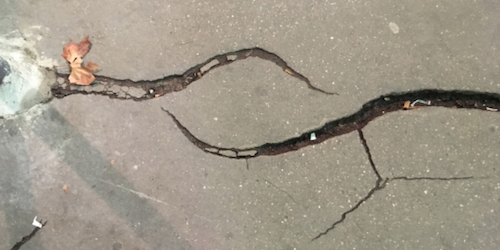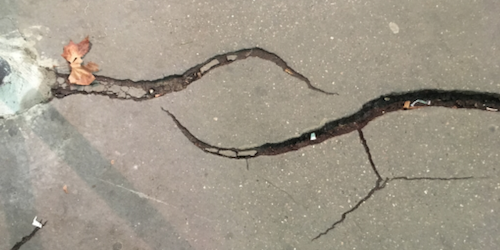Why Some Cracks Repel
When two cracks propagate in a material like concrete or metal, they tend to follow paths that bring them closer to each other. However, some cracks exhibit repulsion for a short distance before reverting to the attractive mode of propagation. The end result is a hook-like crack pattern. Loïc Vanel from the University Claude Bernard Lyon 1, France, and colleagues explored this behavior by computing the crack propagation directions for various crack configurations. They showed that repulsion occurs when relatively long cracks approach each other head-on or nearly head-on. The model could prove useful for devices, such as mechanical thin-metal-film sensors and stretchable electronics, which are sensitive to how cracks connect to each other.
Cracks occur when a material is placed under stress. Fracture mechanics theory can often predict the direction that cracks will propagate based on stress minimization. However, previous theoretical work has had difficulty explaining the behavior of two cracks that are heading toward each other on parallel tracks: the models seem to predict only attractive crack interactions, whereas observations show that repulsion is possible.
The researchers re-investigated the parallel crack problem using finite element analysis, in which the material is divided into smaller parts, and the forces are determined on each part. By calculating the direction that the cracks propagate, they found that repulsion can occur in a small parameter space when the crack separation is less than about 10% of the crack length. The results appear to explain geological formations in which 100-km-long ridges repulse each other at scales of a few kilometers.
This research is published in Physical Review Letters.
–Michael Schirber
Michael Schirber is a Corresponding Editor for Physics based in Lyon, France.





